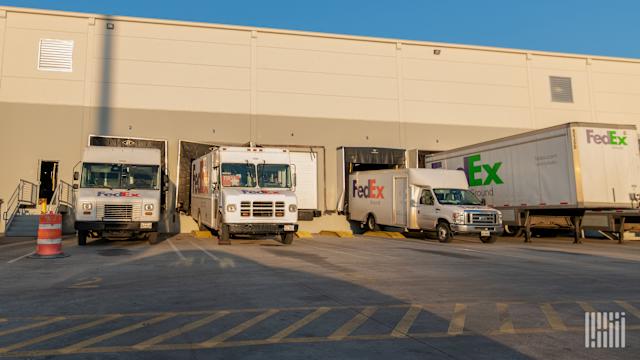
July didn’t pull any punches. Volatile rates. Tightening capacity. Diesel spikes that tested everyone’s cash flow. For small carriers, it was either a month of smart moves—or hard lessons. What separated those who protected margins from those who scrambled to survive? Discipline. Strategy. Execution.
In this recap, we break down what small carriers got right, where they went wrong, and how to use July’s market as a launchpad for smarter, leaner operations heading into peak season.
What Small Carriers Got Right
1. They Focused on Home Turf
The carriers who won in July didn’t chase freight across five states. They stayed close to home, worked repeat lanes, and locked in consistent power-only or short-haul freight that kept wheels moving and fuel costs manageable.
Real example:
One 6-truck fleet in Tennessee turned down 800-mile loads in favor of a tight 250-mile triangle. By week three, they had locked in a daily run with a regional food distributor—high frequency, predictable rates, and lower maintenance risk.
2. They Used the Downtime to Strengthen Relationships
Rates weren’t great, but downtime was gold for carriers who used it wisely. July was when smart owners picked up the phone—not just for loads, but to follow up with brokers, check in with old shippers, and build actual relationships.
Tactical move:
Carriers that updated their shipper list, ran lane reports, and scheduled two weekly prospecting hours are already seeing better offers roll in.
3. They Made Coaching a Priority
July’s heat didn’t just test engines—it tested drivers too. Smart carriers saw an uptick in harsh braking, speeding violations, and HOS mistakes. But instead of punishing, they coached.
Winning script:
“Let’s review your last roadside. That 68 in a 55 dinged our CSA—next time, ease it down through that construction zone. If we drop that unsafe driving score, we qualify for a better contract I’m bidding on now. You’re key to that.”
Small tweaks in conversation led to real results. Fewer violations. Stronger scores.
4. They Watched Their Numbers Like a Hawk
Gross doesn’t mean anything if the net ain’t right. Carriers that tracked cost-per-mile daily in July were able to spot trouble early—especially when diesel jumped mid-month.
One carrier insight:
“We noticed we were spending $0.12 more per mile after switching fuel cards. We swapped vendors mid-cycle and got back on track before the damage got worse.”
The lesson: eyeball every line item. Especially when rates are thin.
5. They Took Tech Seriously
The ones who finally ditched Excel and stopped printing BOLs from the truck stop? They ran tighter ops, tracked KPIs weekly, and didn’t wait until invoicing to know how much they made.
Story continuesIf you’re still writing odometer readings by hand, July exposed you.
Carriers who cleaned up dispatch and billing with real TMS tools didn’t just move freight—they moved forward.
Where Small Carriers Dropped the Ball
1. They Reacted Instead of Planning
Many carriers jumped on cheap freight thinking “at least we’re moving.” But they didn’t map out round-trip profitability. They didn’t calculate true cost after tolls, fuel, or layover risk. And they got burned.
Reminder: A load that pays $3.50/mile out but nothing back is a trap—especially in July.
2. They Ignored Safety Coaching
You don’t fix CSA scores in court—you fix them in the cab. The carriers who skipped safety meetings or waited for violations to add up are now looking at inspections that cost them business.
Harsh but true:
If you haven’t talked CSA with your drivers in the last 30 days, you’re already behind.
3. They Didn’t Prospect for Direct Business
If you spent July refreshing the load board instead of making at least five new shipper contacts a week, you wasted a golden window. Brokers were overloaded. Shippers needed help. But they only awarded contracts to carriers who showed up.
Missed opportunity:
Small carriers who emailed lane data, FMCSA snapshots, and insurance certs to local shippers? They got callbacks.
4. They Let Emotions Drive Rates
Some carriers panicked when they saw market softening and took anything above $2.00/mile—even if it wrecked their week. Others got greedy on hot lanes and sat empty while better offers passed them by.
Truth: Strategy beats emotion. Always.
5. They Didn’t Budget for Fuel Swings
The diesel spike in late July shouldn’t have surprised anyone—but many small carriers got caught off guard, especially those who skipped monthly fuel projections.
One owner’s mistake:
“I budgeted off spring fuel prices and didn’t re-forecast. We were $6,000 short by the 20th of the month.”
What to Do Now: Turning July Lessons Into August Strategy
-
Audit every mile you drove: Where did you run hot? Where did you lose?
-
Schedule weekly safety talks: Make CSA part of the culture, not a reaction.
-
Build a Q3 shipper list: You need 25 contacts minimum. Reach out weekly.
-
Re-run your cost per mile: Adjust for July fuel trends and overhead spikes.
-
Block time for outreach: Minimum 2 hours/week cold calling or emailing.
Final Word
July gave small carriers a choice—adjust or absorb the damage. Some leveled up their back office, coached their drivers, and trimmed the fat from their lanes. Others spun their wheels, hoping for a rate bounce that never came.
Don’t let the next month catch you with the same bad habits. Take the wins, fix the misses, and make August your best-run month yet. This market ain’t easy—but with the right systems, the right mindset, and the right action, it’s still winnable.
The post July Market Recap – What Small Carriers Did Right (and Wrong) appeared first on FreightWaves.









![Lobster Market Growth: Key Factors Driving Expansion to USD [9.6 Billion] by {2029}](https://noticiasdecostarica.com/zb_users/upload/2025/07/20250714121902175246674235065.png)



